Des éclats
Passerelle Centre d'art contemporain, Brest
As part of Chantiers Résidence, a program by Passerelle Centre d'art contemporain et Documents d'artistes Bretagne
Curator: Loïc Le Gall
Performers: Sarah Bellaiche, Tiphaine Dambrin, Naomie Daviaud, Juliette Fanget, Charlotte Gourdin, Nina Krawczyk, Anna Larvor, Martin Routhe, Robin Sarty, Tabea Von-Vivis
Photo: Aurélien Mole
Video: Margaux Germain ; Production: Documents d'artistes Bretagne
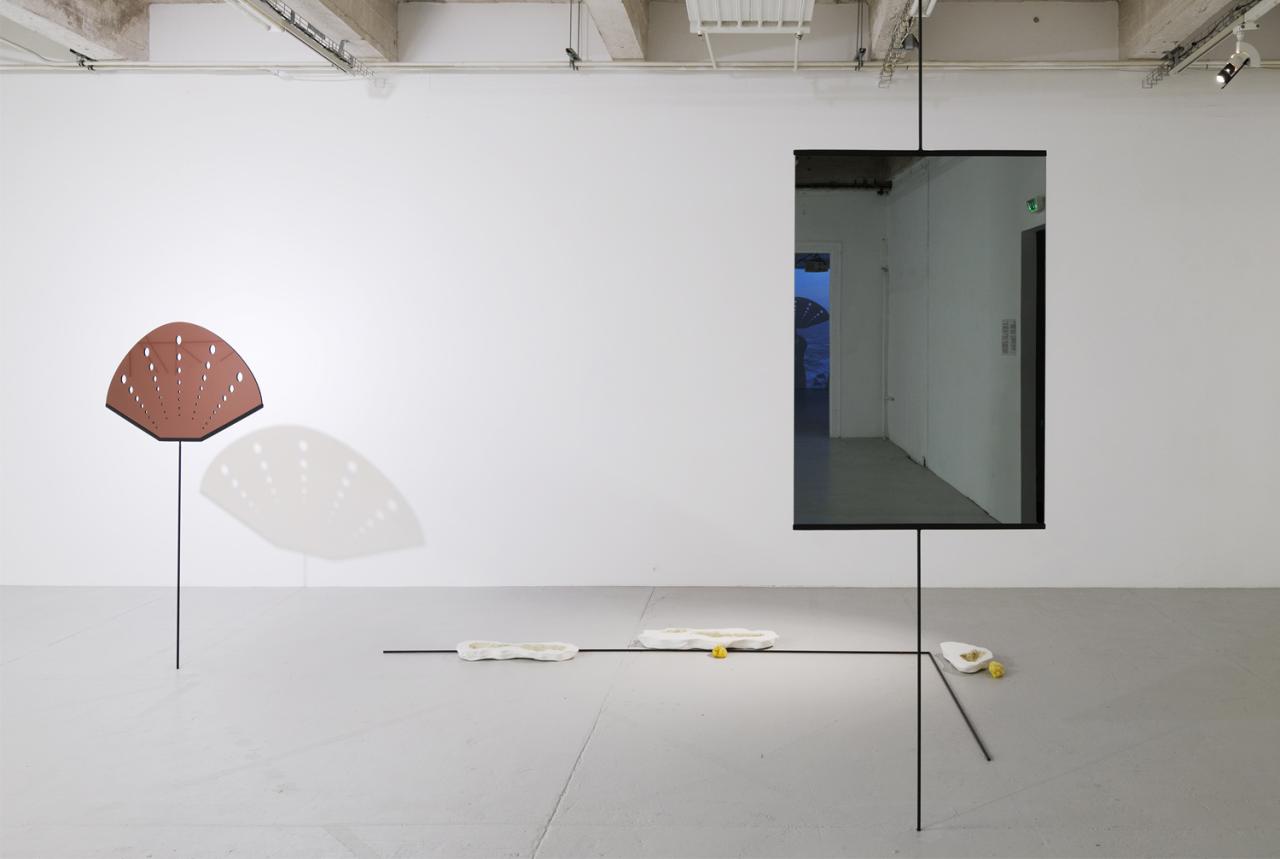
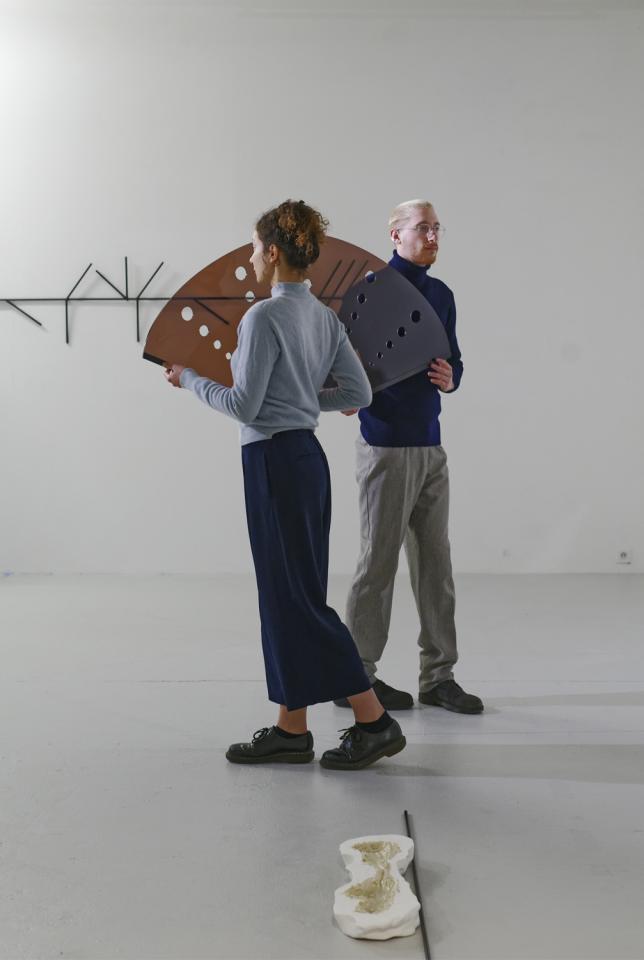
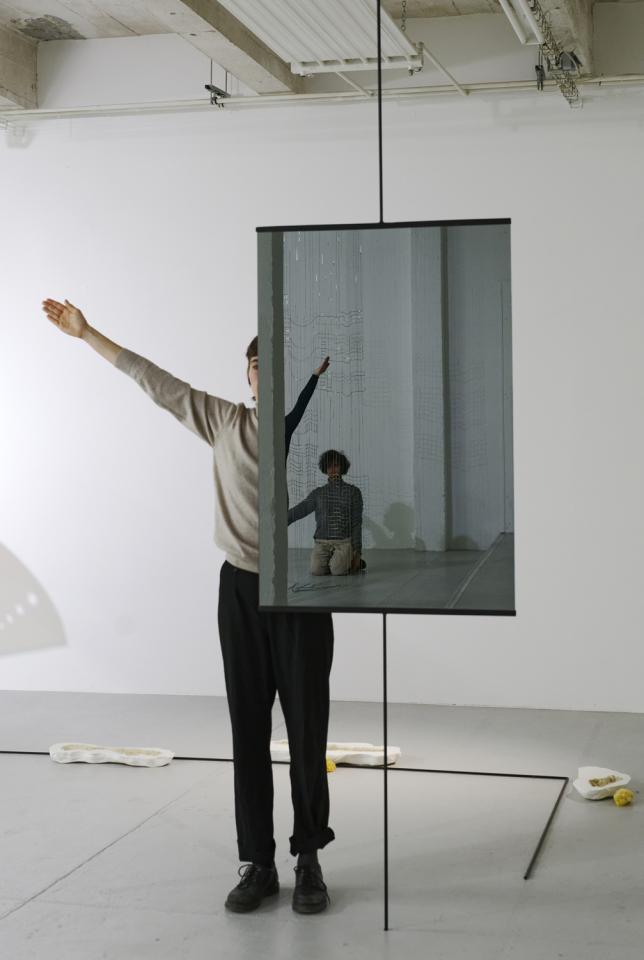
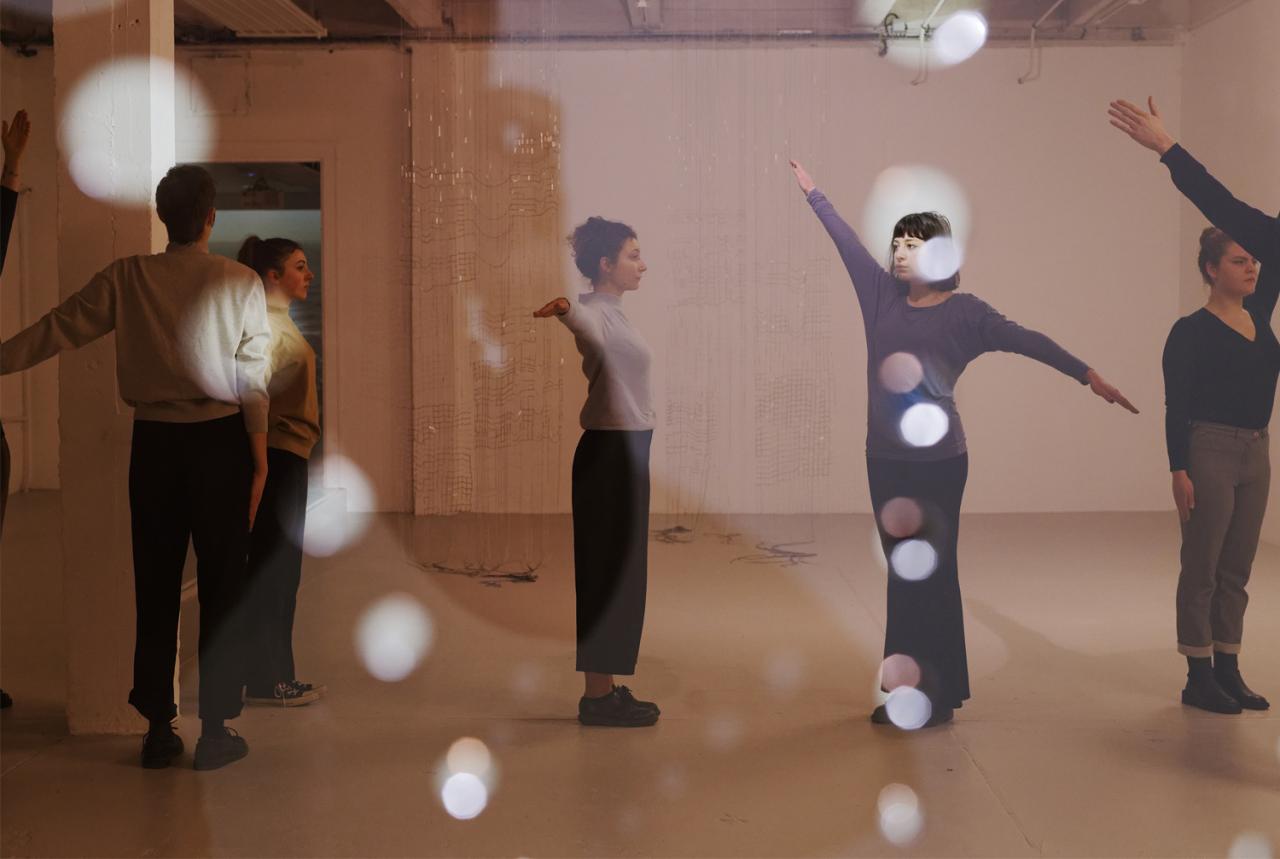
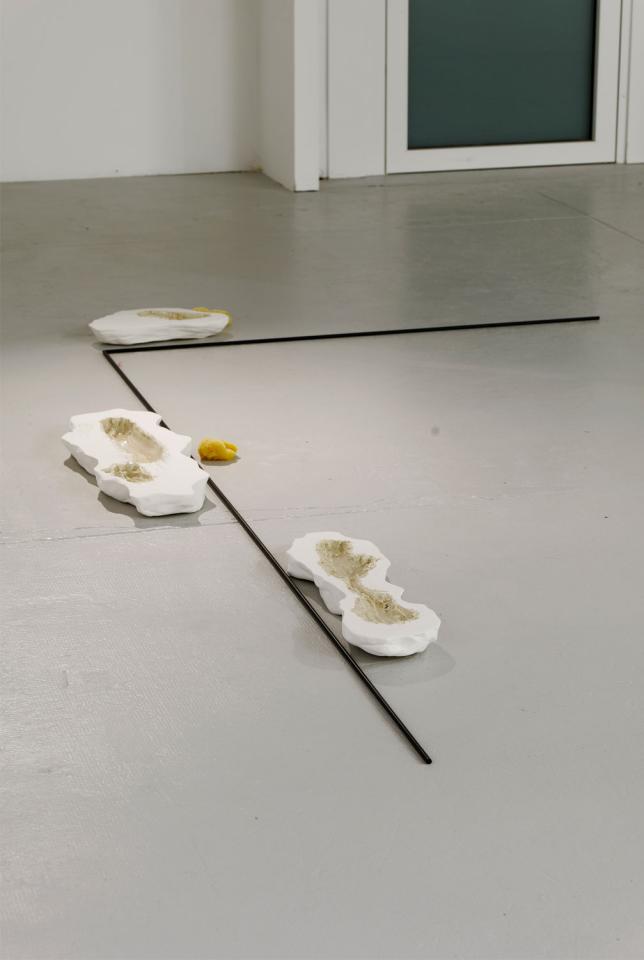
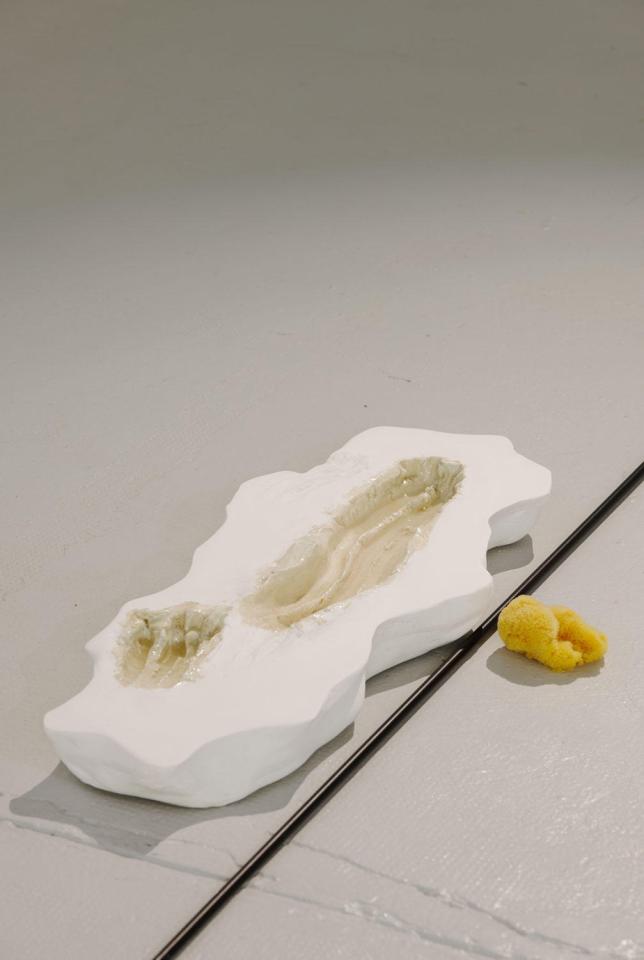
l’appel confus des eaux, 2020, installation, steel, paint, Plexiglas, mirror, paper, plaster, resin, water, variable dimensions.
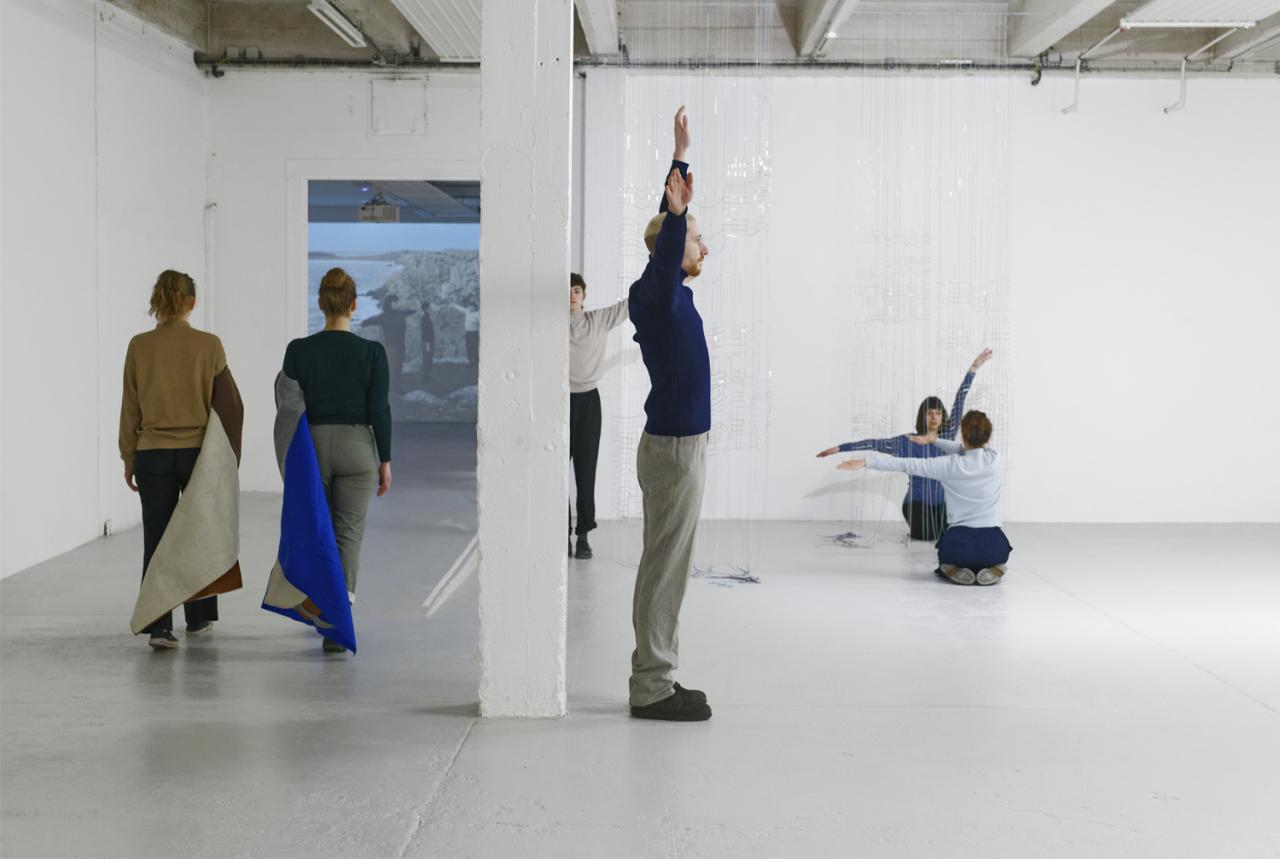
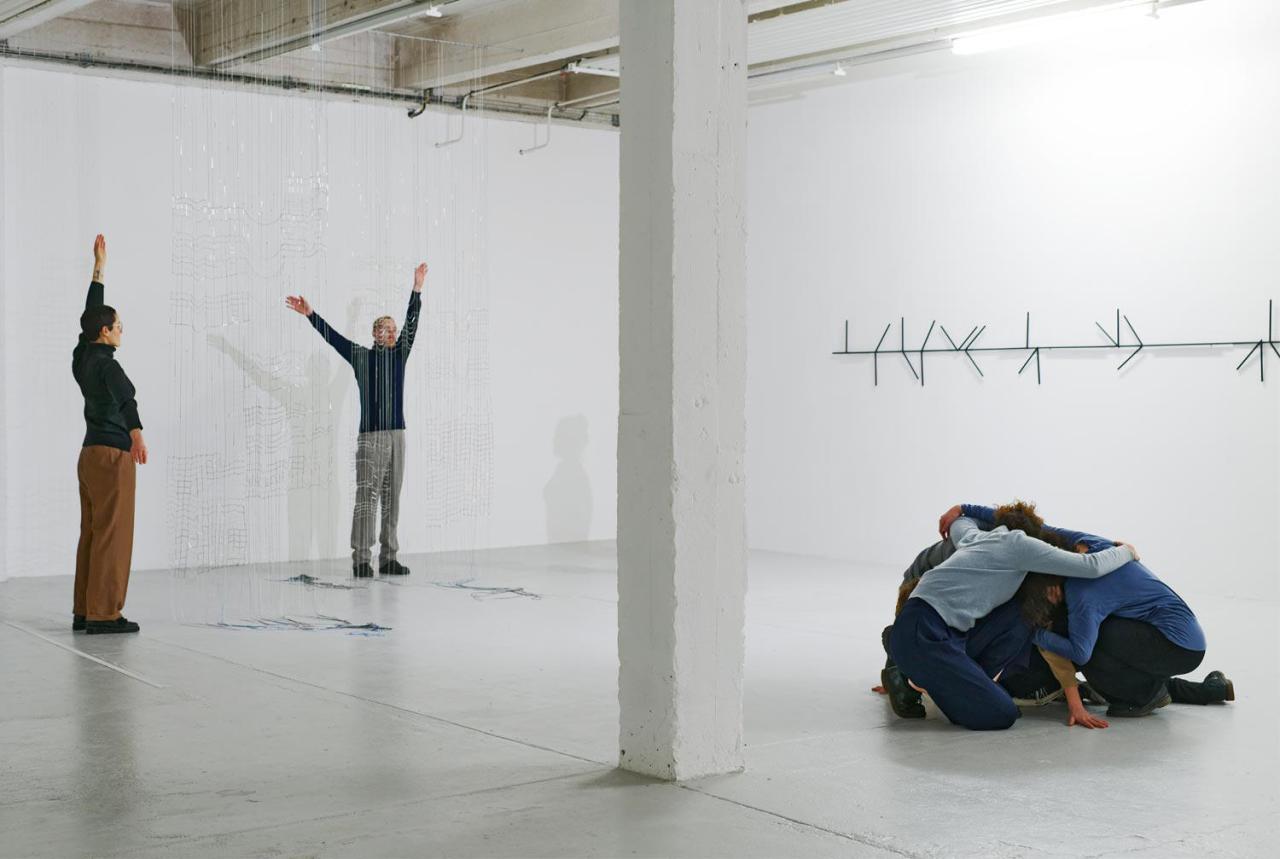
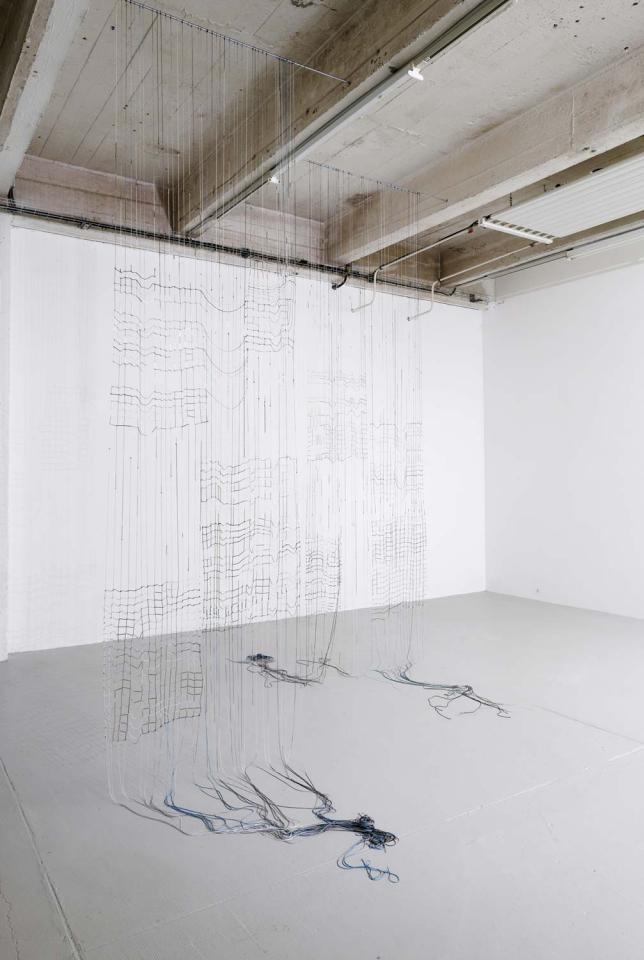
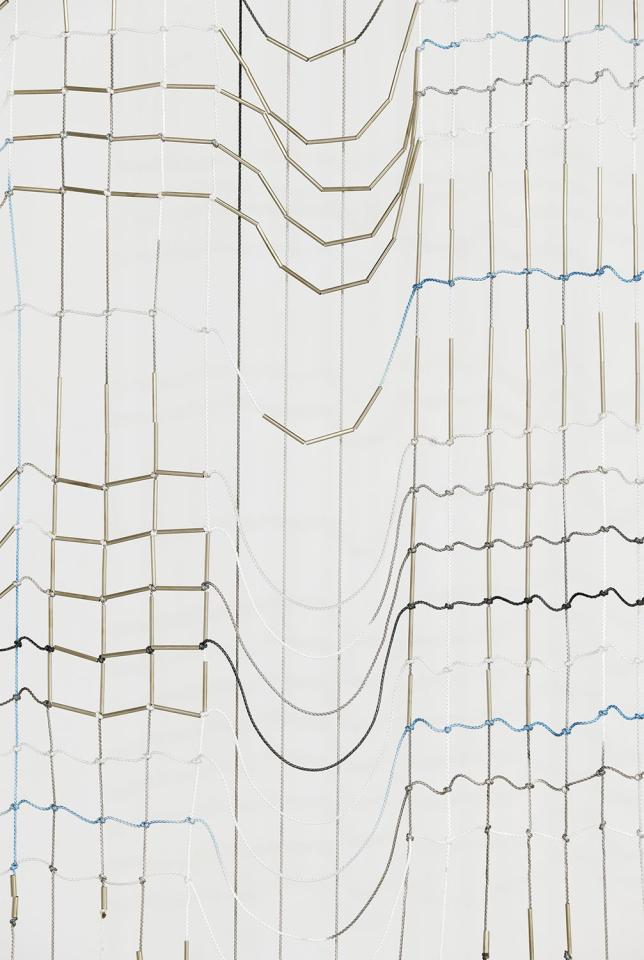
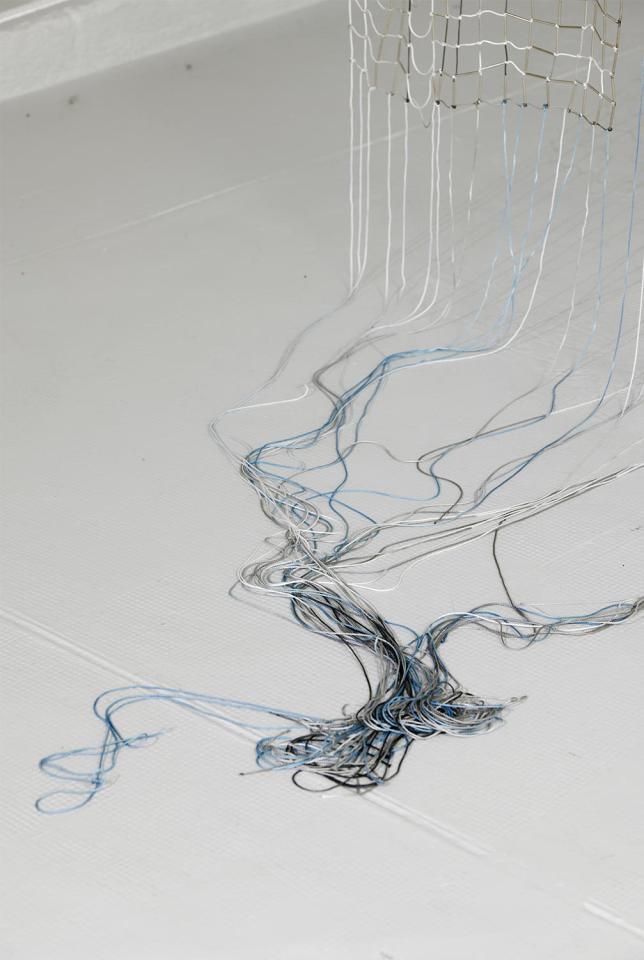
Le tissus de mes nerfs, 2020, metal, cotton, ink, 150 cm x 300 cm
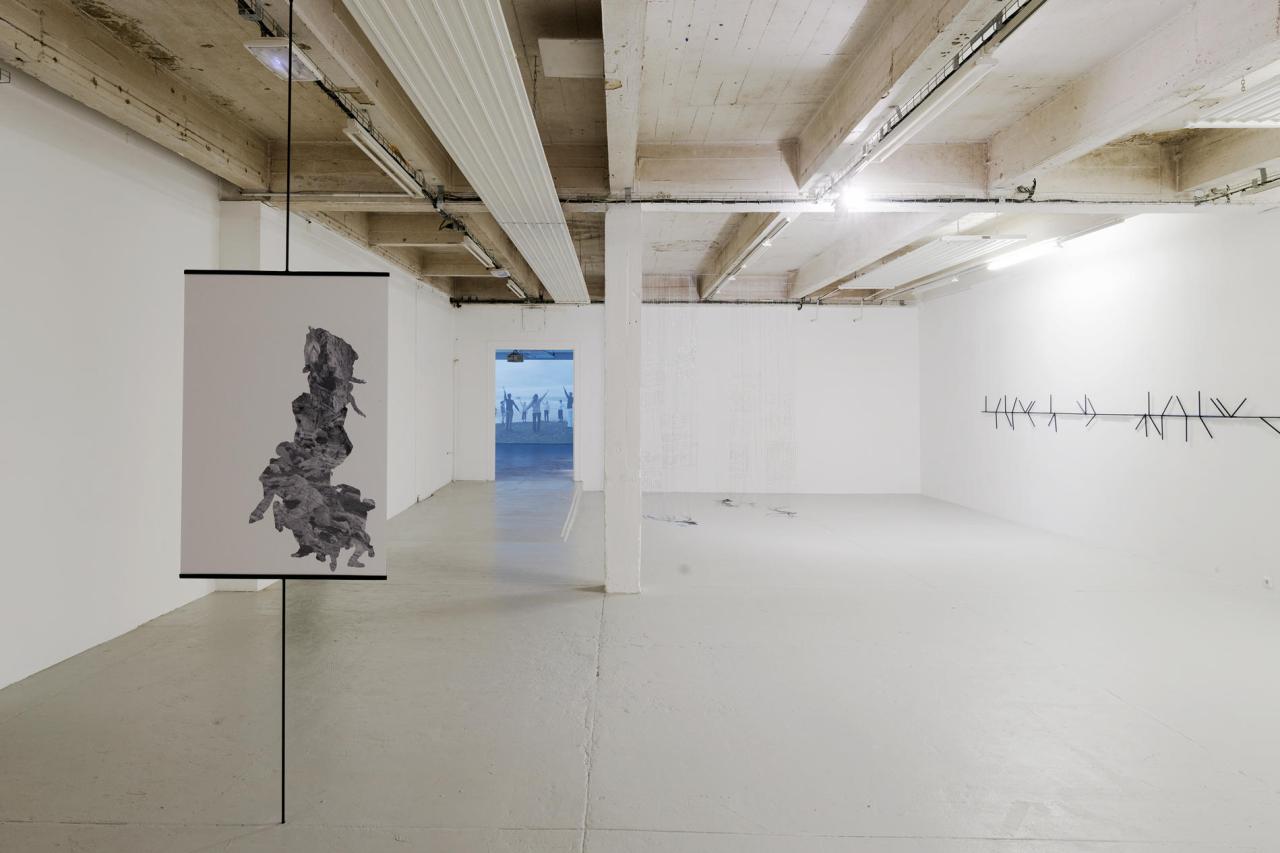
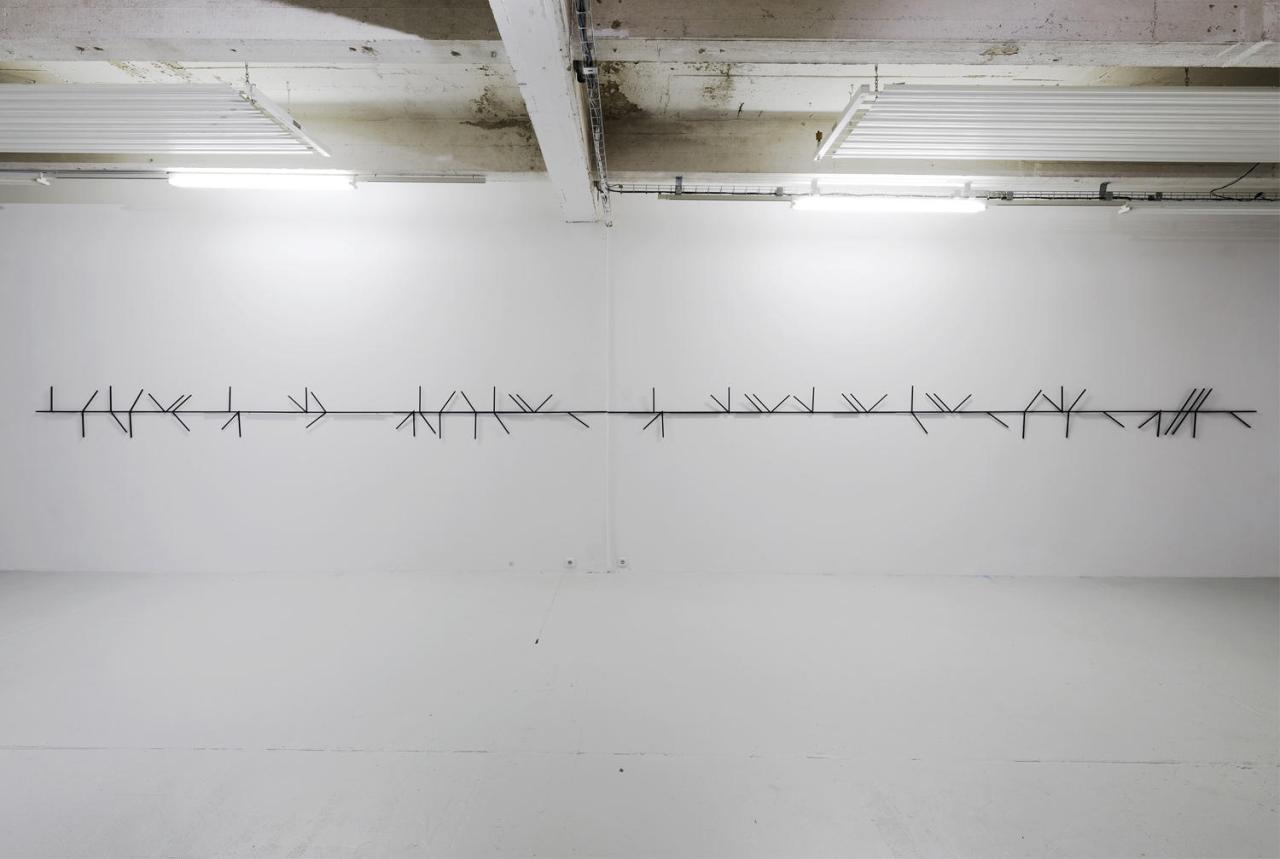
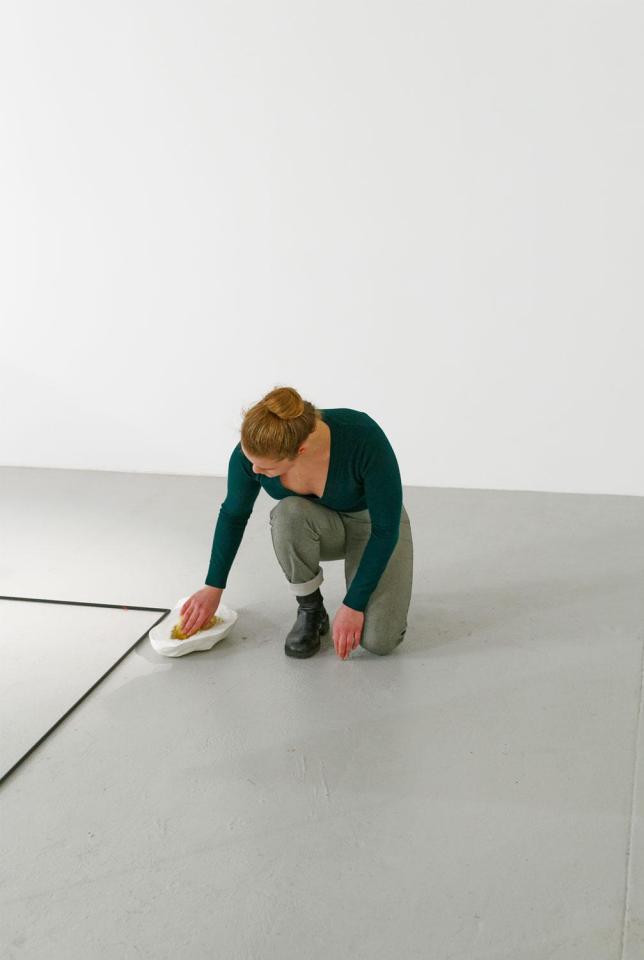
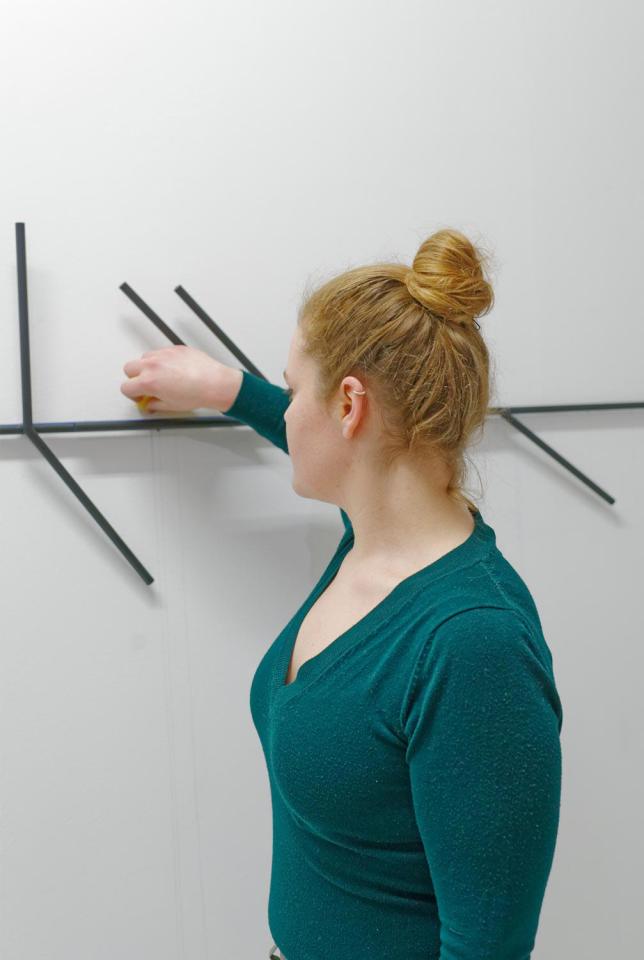
Je veux partir avec vous, partout ou vous êtes allés, 2020, steel, paint, 12 m
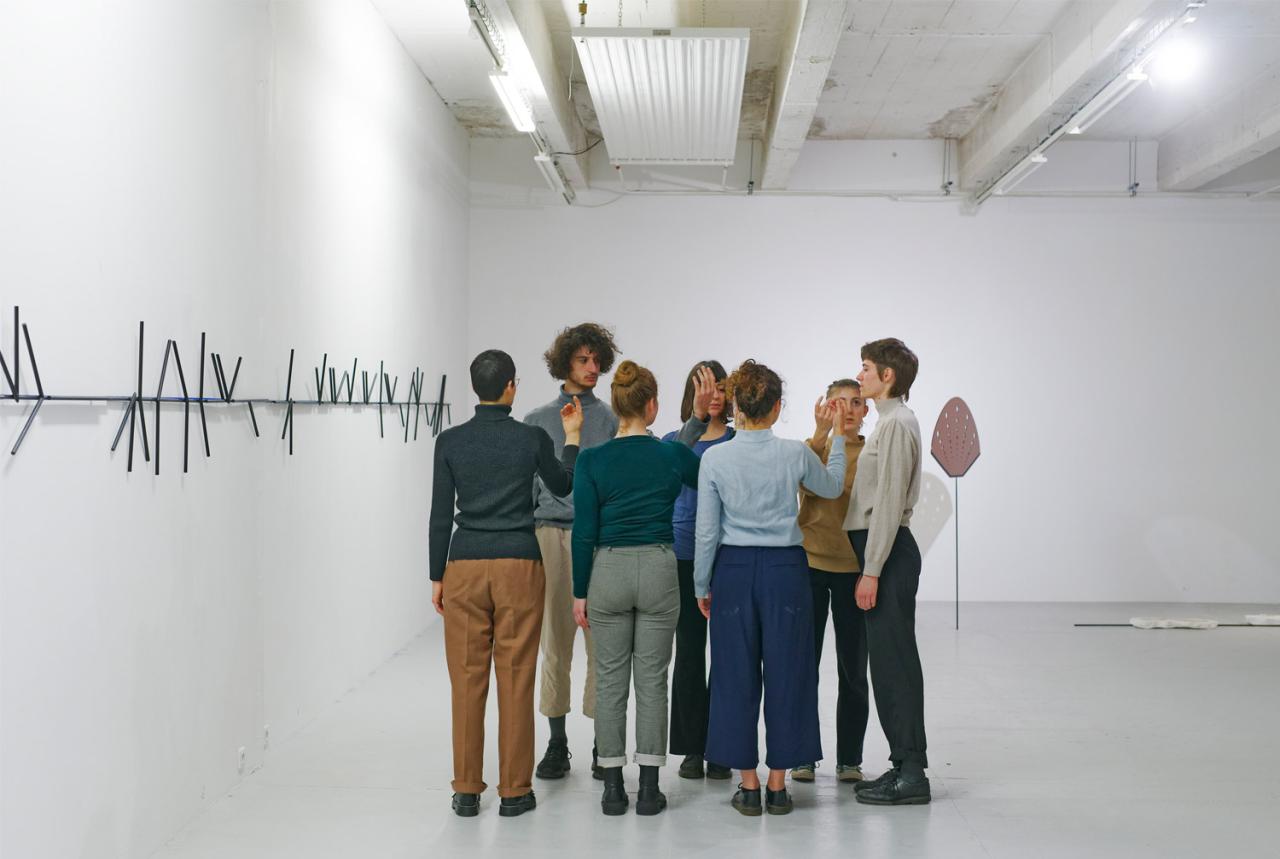
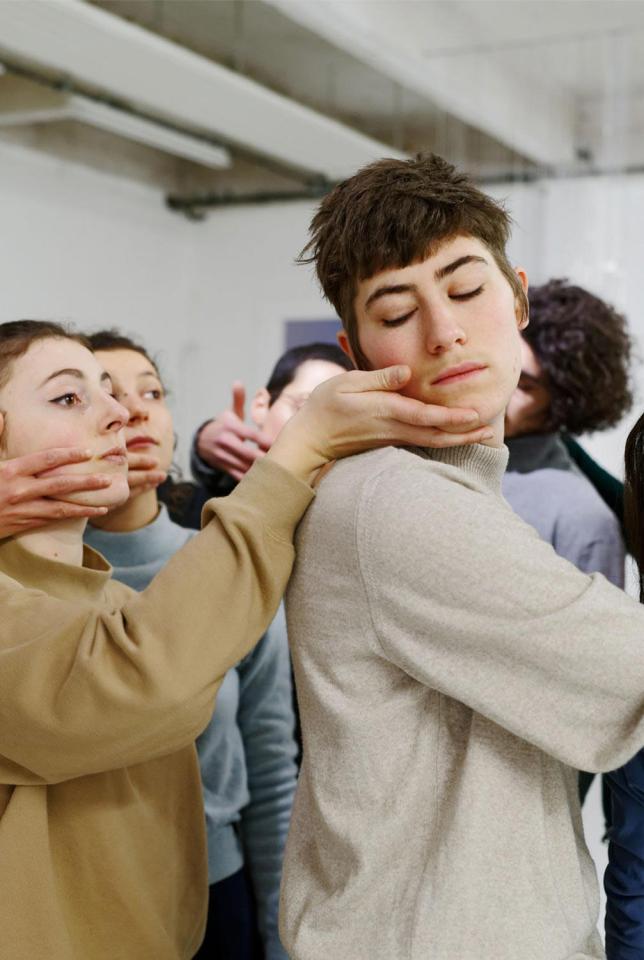
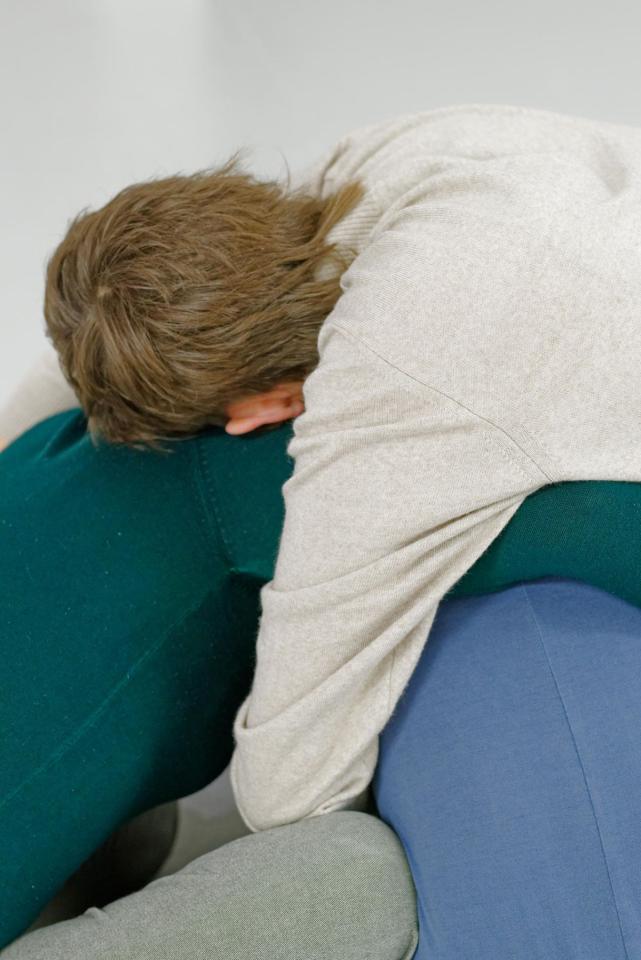
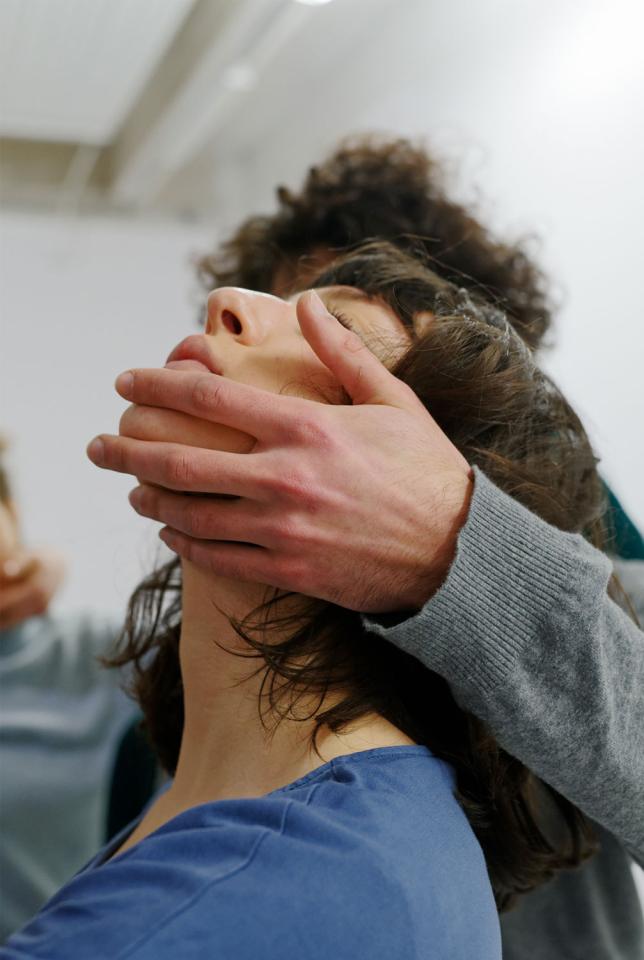
Exhibition and performance views.

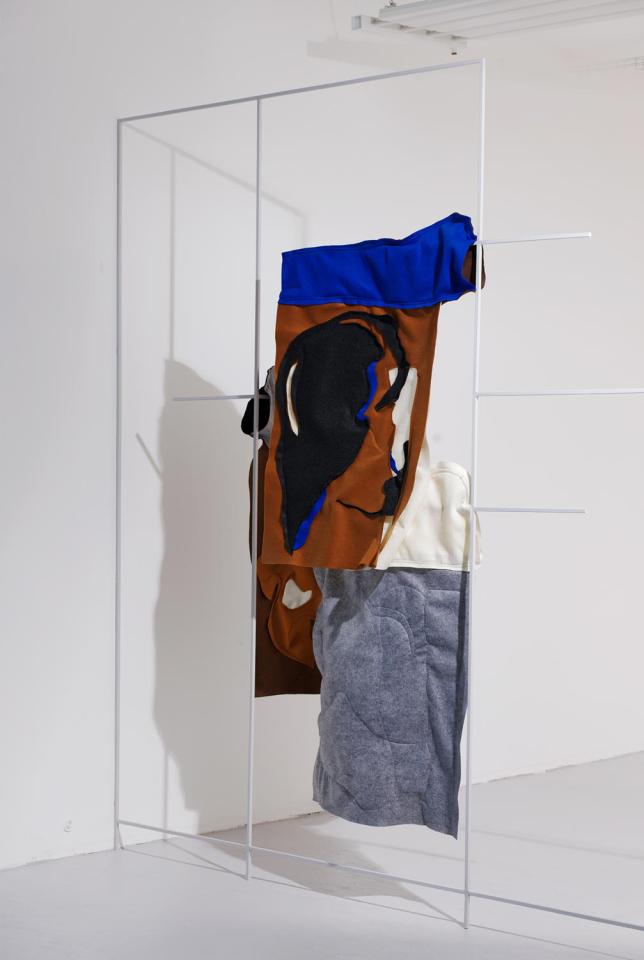
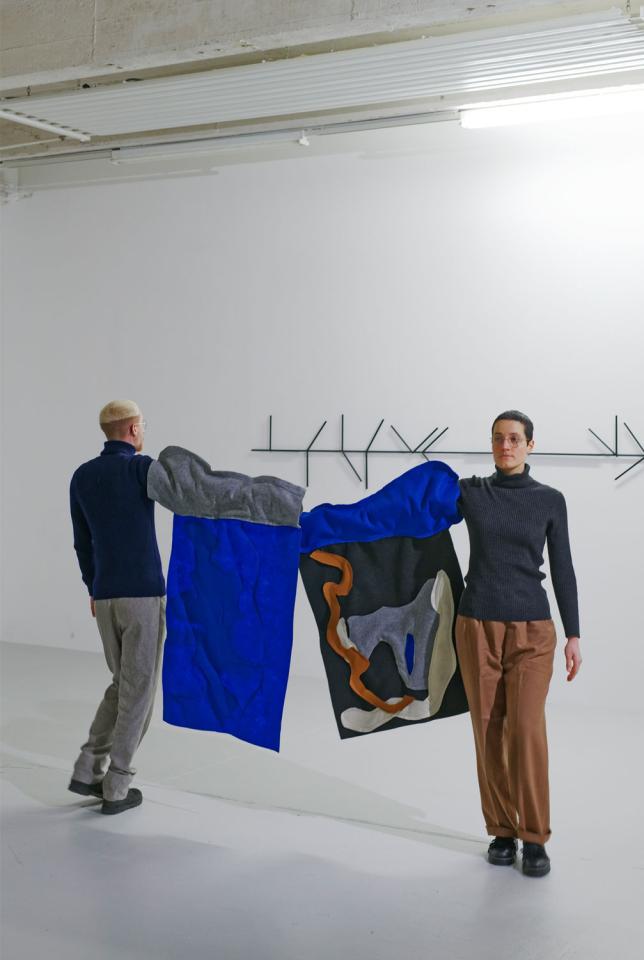
Embrassant subitement tout l’horizon maritime, 2020, steel, paint, felt, variable dimensions
Groundswell
“In its simple, natural, primitive form, far from any aesthetic ambition and any metaphysics, poetry is a joy of the breath, the obvious happiness of breathing. The poetic breath, before being a metaphor, is a reality that one could find in the life of the poem if one wanted to follow the lessons of the aerial material imagination. “(1)
Romanticism has made a common place out of the landscape-state of mind, subject respectively to the variability of elements and feelings. (É) moved by the force of the waves, seascape and human soul undoubtedly share a certain uneasiness (2) and the same meaning, in (de) finite. More concretely, the sea and the body appear as living organisms traversed, animated by the air, an element whose poetic and cinematic essence and power must be emphasized.
These three entities which are the body, the sea and the breath constitute the pillars of Fanny Gicquel’s exhibition presented at Passerelle in the form of an installation-video-performance entirely bathed in poetry. And for good reason, its main anchoring point is none other than the poem Ode maritime signed Álvaro de Campos (1890-1935). This Glasgow-trained naval engineer is in a way the repository of the maritime impressions of one who knew how to handle the art of heteronymy like no one else: the Portuguese author Fernando Pessoa (3). Building a bridge between Lisbon and Brest, two port cities facing the open sea, the artist focused in particular on the first of three parts of this long prose poem in which the author, observing the Tagus which opens towards the oceanic horizon, rocked by the comings and goings of boats and the fertile imagination of departures and arrivals, delivers a sensory approach to the marine element.
Ten verses were extracted from it whose ambient presence in the exhibition turns out to be neither audible nor readable (4), but visible and sensitive through different mediums - video, sculpture and performance (5) - which distill the version. semaphoric. What could be more natural than a marine language to “translate” these verses with bluish reflections? Falling into the same obsolescence as semaphores, these observation posts of the French Navy overlooking seas and oceans, this coded language consisted of signals emitted by means of arms equipped with flags, each letter of the Latin alphabet corresponding to a position specific.
From this body language - and hence, non-verbal - both chthonic and aerial (6), Fanny Gicquel has thus composed (7) an elementary choreography consisting of a series of minimalist gestures essentially articulated around the breath, interpreted by several students of the EESAB in Brest (8). By its binary movement and rhythm - inspiration / expiration -, breathing recalls the dual character of so many natural rituals (surf and tides, sunrise and sunset, day and night, etc.) at the same time as it summons, while incorporating it, the dialectic of the inside and the outside (9), like two communicating vessels.
Shot outdoors during the day on the Crozon peninsula, the film Immensity with you consists of a succession of still shots like so many living tableaux giving to see, immersed in nature, the community of performers secretly declaiming the verses. chosen from Maritime Ode, to handle and wear certain accessory objects - which we (re) find in the exhibition - which operate less as signs than as hyphens and points of contact between bodies and the landscape. We forget the reflex of meaning to let ourselves be carried away by the sensuality of images, faces and gestures, the communicative energy of bodies and nature which breathe in unison (10). It is the breath that speaks, that listens, flows and exudes beyond the space-time of the film itself. The slow and deep breathing that constitutes its soothing and hypnotic soundtrack gives its pulse to the exhibition (11) composed in a fragmentary, even indicative fashion. Slowly, piece by piece, shot by shot, sequence by sequence, unfolds the setting within which is replayed - and re-read - the poetic landscape, populated by “interactive” objects and bodies.
The lines arranged in the scenic space draw a free course, a multi-lane scenario, a diffracted visual narrative. In front of us, a cloudy horizon stretches out: the steel sculpture I want to leave with you, wherever you have been takes up and materializes the outline in semaphoric language of this same line of maritime Ode. As we approach it, we perceive on the white surface of the wall tiny bluish tears which “betray” the presence of a line of blue pigment hidden behind the metal line which reminds us that the horizon, sky and sea merge by infra-thin. However slight they may be, the drips bear witness to a gesture, an action whose thread can be traced: on the ground lies a still damp sponge water with which it swelled, collected in the imprint of a hand that hollowed out the porous material of a block of plaster. Evoking a plant element as much as a rising / setting sun, a frail fan carved from a copper-colored Plexiglas used in the manufacture of boat portholes to protect from glare rises at eye level, forming a potential filter on the landscape-exhibition. Fixed to the ground (earth) and to the ceiling (sky / air), a black mirror reflects by flattening the space and what (ow) that is (re) there: it operates here as a binder between the different spatio-temporal strata of the exhibition, both from the point of view of its construction and its unfolding (12), at the same time that it appears as the key interface of a reflection on the notions of presence and representation (13). Freely resuming the knot technique used for fishing nets, The fabric of my nerves consists of two screen curtains whose undulating and vibrating meshes, far from enclosing us, act as a floating threshold. Passed on the other side, in front of a sand / flesh-colored wall, a white grid stands out as if drawn in space on which hang four felt flag sleeves in the colors of the Crozon peninsula, occasionally worn by the performers in the film and during the various activations of the performance during the exhibition (14).
Multiplying points of view and lines of flight such as the senses and strata of reading, traversed back and forth by a common breath, “Des éclats” works by “rebound”, associating the materiality of objects-works-bodies in the presence. their “fleeting impressions” (15) as if to better amplify their degree of anchoring in the present and the real, but also, and above all, the power of (retro) projection - and motion - imaginary and poetic. Offered in multiple displacements, transformations and other spatial and temporal translations, bodies, elements, images, words, materials, objects, flows and (im) perceptible phenomena communicate silently with each other and come alive indefinitely according to their multiple correspondences.
Anne-Lou Vicente, avril 2020
1 Gaston Bachelard, L’air et les songes, Essai sur l’imagination du mouvement, chap. XII « La déclamation muette », Paris, Librairie José Corti, p. 271.
2 En référence à l’œuvre posthume de Fernando Pessoa (sous l’hétéronyme de Bernardo Soares), Le Livre de l’intranquillité. Les premiers mots de Jean-Christophe Bailly dans L’Élargissement du poème (Paris, Christian Bourgois, 2015) y font référence, ainsi qu’au paysage-état d’âme. Voir p. 13 : « Très tôt la leçon du romantisme allemand, tout entière nourrie de la Naturphilosophie de Schelling, a été oubliée, et à la mise en réseau de l’ensemble des existences, qu’elle illustrait par des ricochets et des échos, s’est substituée une version bourgeoise de l’épanchement, dont la célèbre question de Lamartine sur les objets ‘inanimés’ constitue sans doute le point culminant. »
3 En portugais, « pessoa » signifie « personne ». Lire Iooss Filomena, « L’hétéronymie de Fernando Pessoa. Personne et tant d’êtres à la fois », Psychanalyse, 2009/1 (n° 14), p. 113-128 https://www.cairn.info/revue-psychanalyse-2009-1-page-113.htm Voir aussi Jean-Christophe Bailly, op. cit., p. 163 : « La scène pronominale ne met pas en face les unes des autres des ‘pronominalités’ fixes, elle se dispose comme l’espace d’une sorte de fondu enchaîné permanent où chaque position, tenue un instant par tel être, ne serait qu’une encoche, à la fois sur le chemin de ce qui le compose comme singularité, et sur celui de ce qui l’expose à croiser d’autres singularités, elles-mêmes pareillement engagées dans leur propre composition ».
4 À noter toutefois que les dix vers en question sont renseignés sur l’un des cartels de l’exposition, chaque vers étant associé à l’interprète qui l’a sélectionné. Rappelons-les ici : Délavée par tant d’immensité déversée en ses yeux ; Avec la douceur douloureuse qui monte en moi comme une nausée ; Mes désirs enfiévrés crèvent en écume ; Le mystère de chaque départ et de chaque arrivée ; Et le tissu de mes nerfs un filet qui sèche sur la plage ; Ah n’importe comment n’importe où partir ; Vivre en tremblant l’instant des eaux éternelles ; De la peur ancestrale de s’éloigner et de partir ; Toute cette fine séduction s’insinue dans mon sang ; Et au fond de moi commence à tourner un volant lentement.
5 Si la vidéo est une voie nouvelle empruntée par l’artiste à l’occasion de cette résidence-exposition à Passerelle, sculpture, installation et performance constituent les médiums de prédilection de sa pratique où entrent en jeu la mise en espace et en contact par l’intermédiaire du corps qui (s’)active et (se) déplace, mettant ainsi en relief des notions comme le mouvement, la circulation et l’échange.
6 Les pieds sont au sol et les jambes restent immobiles. Seuls les bras bougent et brassent l’air. La position verticale souligne la « colonne d’air » qui traverse la partie supérieure du corps.
7 Précisons que traduction et composition vont ici de pair avec une certaine marge d’interprétation et d’improvisation, tant sur le plan de l’écriture que de la performance.
8 Au sujet de cette collaboration avec les étudiant.e.s et plus largement, le déroulement de la résidence, lire l’entretien http://www.leschantiers-residence.com/fanny-gicquel/
9 Une dialectique déjà à l’œuvre dans la notion de paysage-état d’âme. Lire Gaston Bachelard, La poétique de l’espace, 1957, Paris, Quadrige PUF (6e édition, 1994), chap. IX, p. 191-207. « L’en-deçà et l’au-delà répètent sourdement la dialectique du dedans et du dehors : tout se dessine, même l’infini », p. 192.
10 Notons ici l’importance du toucher. L’analogie entre corps et paysage/nature confine ici à leur « fusion » qu’illustre symboliquement le collage visible au verso du miroir présent dans l’espace d’exposition, qui combine les contours d’une masse de corps solidaires (visible dans la vidéo et répétée lors de la performance) à la matière des roches de la pointe de Pen-Hir, dans la presqu’île de Crozon.
11 Il convient de préciser que le film, s’il est partiellement visible et audible par le visiteur dès son arrivée — de manière directe bien que lointaine, mais aussi par « ricochet » via son reflet dans le miroir présent dans la première salle —, est présenté au fond de la deuxième salle.
12 Ces strates, poreuses voire entremêlées, pourraient être celles que forment, sans ordre arrêté, le film, l’exposition et la performance. Activée tous les mardi à 19h et le troisième samedi du mois à 15h30, la performance réintroduit physiquement dans l’espace d’exposition les corps (re)présent(é)s en continu via/dans le film. En les reflétant, le miroir les embrasse en une même image-temps dans laquelle notre propre corps peut se faire une place.
13 Les différents sens connus de représentation incluent ici celui, littéral, de remettre au présent.
14 On pense immanquablement à l’œuvre conçu par l’artiste allemand Franz Erhard Walther dès les années 1960, entre soft sculpture post-minimaliste, vêtement et rituel performatif. http://i-ac.eu/fr/artistes/1241_franz-erhard-walther
15 Voir Clément Rosset, Impressions fugitives. L’ombre, le reflet, l’écho, Paris, Minuit, 2004.






Research documents





References



































Studio views












Frieze London, Foire d’Art Internationale, (solo-booth) Angleterre, curator: Cédric Fauq
Hostcall, Open School Gallery, Nantes, curator: Annie Filon
Touching Feeling, Hua International, Pékin






In parallel with the exhibition, I was invited by Phenüm, an independent label based in Brest, to design a scarf to tie in with it. I chose to inscribe the word ‘immensité’(1) , translated into semaphoric language, on one side, while on the other, I drew inspiration from a collage of photos of Finistère landscapes to create a colorful design reflecting the hues of the exhibition.
(1) From the line “Delavée par tant d’immensite deversée en ses yeux”, Ode maritime, Fernado Pessoa. It’s also the last word in the video “l’immensité avec vous” (immensity with you), in which the performer, seated on a rock with her back to the horizon, dances to the sea.
Phenüm : https://phenum.com/
Production : Documents d’artistes Bretagne